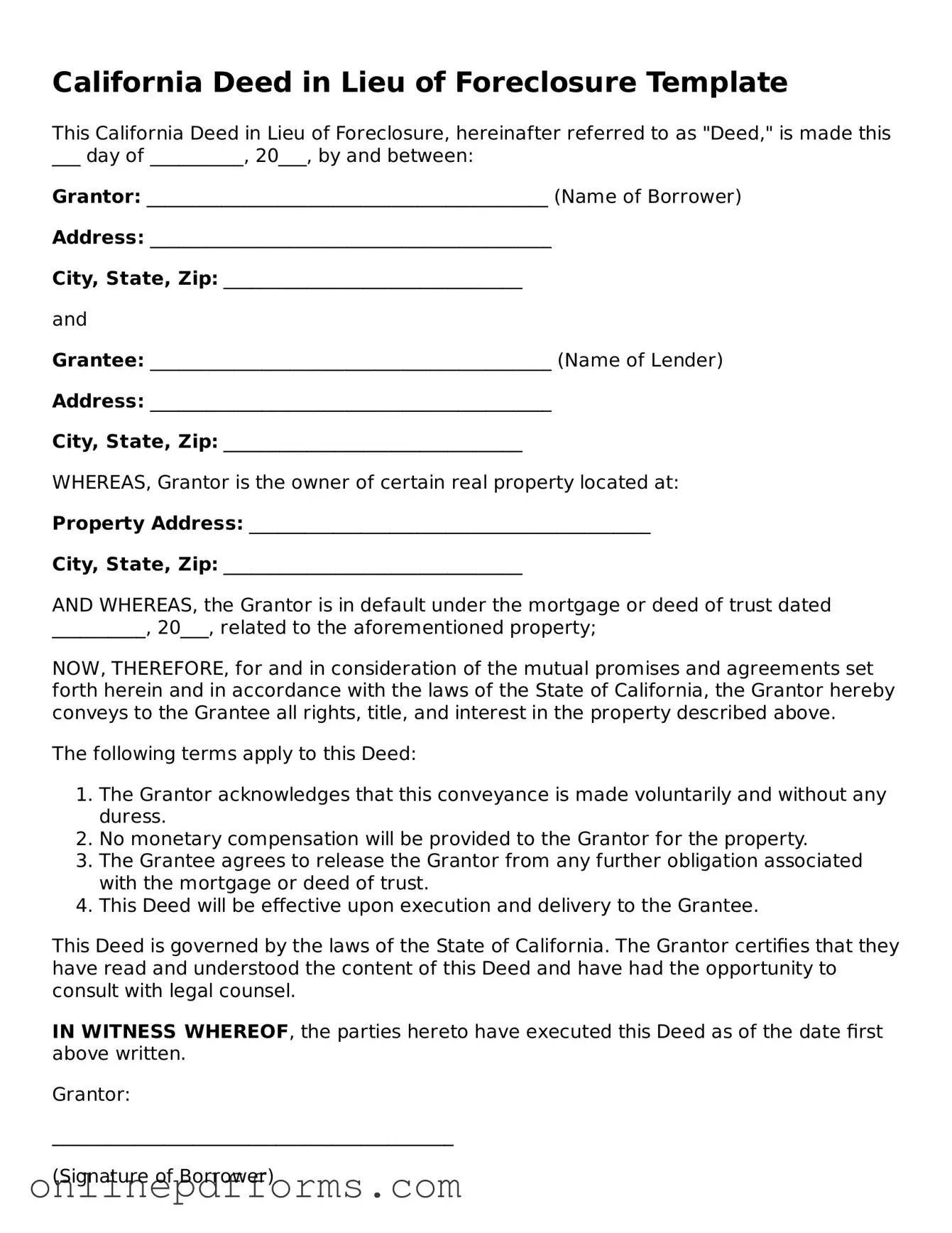The California Deed in Lieu of Foreclosure is similar to a short sale agreement. In both cases, the homeowner seeks to avoid foreclosure by transferring ownership of the property. A short sale involves selling the property for less than the mortgage balance, with the lender's approval. This allows the homeowner to settle their debt without the lengthy process of foreclosure, while the lender recoups some of their losses through the sale proceeds.
Another document that bears similarity is the mortgage modification agreement. This agreement allows homeowners to change the terms of their existing mortgage, making it more manageable. Like a deed in lieu, a mortgage modification aims to prevent foreclosure. However, in this case, the homeowner retains ownership of the property while negotiating new terms, such as a lower interest rate or extended payment period.
The Texas Motorcycle Bill of Sale form is a crucial document when purchasing a motorcycle, ensuring that all details related to the transaction are accurately recorded. This form captures essential information about the buyer, seller, and the motorcycle itself, thus legitimizing the sale and providing legal protection for both parties. If you're looking to understand the specifics of filling out this form, you can read more about the form to ensure a smooth transaction process.
The forbearance agreement is also comparable. In a forbearance agreement, the lender allows the homeowner to temporarily pause or reduce mortgage payments. This option provides immediate relief to those facing financial hardship, similar to the deed in lieu, which serves as a last resort to avoid foreclosure. However, the homeowner remains responsible for the mortgage and must eventually resume payments.
A quitclaim deed shares some similarities with the deed in lieu of foreclosure. A quitclaim deed transfers ownership of property without any warranties. It is often used between family members or in divorce settlements. While a quitclaim deed does not specifically address foreclosure, it can be a tool for transferring property ownership in situations where the homeowner wishes to relinquish their interest in the property.
The assumption of mortgage agreement is another related document. In this arrangement, a buyer takes over the seller's mortgage payments. This can help sellers avoid foreclosure by allowing someone else to assume their debt. While this differs from a deed in lieu, both aim to relieve the homeowner from the burden of mortgage payments and prevent foreclosure.
The bankruptcy filing is also a relevant document. When a homeowner files for bankruptcy, they can stop foreclosure proceedings temporarily. This legal process can provide the homeowner with a fresh start, similar to a deed in lieu, which allows for the transfer of property to the lender. However, bankruptcy can have more extensive implications for the homeowner's financial future.
The loan modification application is another similar document. This application is submitted by homeowners seeking to change the terms of their mortgage to make payments more affordable. Like a deed in lieu, it seeks to prevent foreclosure. However, in this case, the homeowner remains in possession of the property while negotiating new terms with the lender.
The power of attorney document is also relevant in this context. A power of attorney allows one person to act on behalf of another in legal matters. In the case of a deed in lieu, a homeowner may grant power of attorney to someone else to facilitate the transfer of property. This can simplify the process and ensure that all necessary steps are taken to avoid foreclosure.
Lastly, a release of lien is similar to the deed in lieu of foreclosure. When a lender agrees to release their claim against a property, it allows the homeowner to move forward without the burden of the mortgage. This document can be part of a larger agreement, such as a deed in lieu, where the homeowner voluntarily gives up the property to the lender in exchange for the release of the debt.
